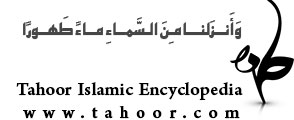
The base of adaptation
The book “the base of adaptation” (Asas al- lqtebas) is the prominent work of the great scholar “khajeh Nasir Tousi”.
It is the most comprehensive logic work (after the “Healing” ( shefa) . written by Avicenna) .
It is written in Persian “the base of adaptation” is the best Persian logic work concerning intellectual Greek sciences.
The book includes all logic techniques.
The author
Muhammad Ibn Muhammad Tusi, outstanding scholar, known as “Nasir al-Din”, “Khajeh Tusi”, “The master of man”, “the 11th intellect” and “The 3rd master” (1201 - 1247), Mashhad – Iran.
He was an astronomer and Shia politician, in 1256 lured the assassin leader Rukn al-Din Khurshah into the hands of the Ilkhan Hulegu, accompanied the latter to Baghdad and founded the observatory of Maragha.
He had a strong sympathy with the Twelver Shia, to him a certain degree of mercy was shown during the Mongol holocaust and whose sanctuaries were spared. He wrote on dogmatics, logic and philosophy, law and belles – lettres, and above all on the sciences, in particular on astronomy.
Khajeh Nasir was fully versed at all the common sciences of his own time: theology, philosophy, mathematics, astronomy and literature.
He also wrote some poems in Arabic and Persian. He followed the Peripatetic philosophers (pshilosophers who follow Aristotle) and his own philosophy was based on Avicenna’s.
His masters:
1- Muhammad Ibn Hasan Tusi “his father” (in transmitted sciences)
2- Ibn Meytham Bahrani
3- Muhaghegh Helli
4- Qutb al-Din Mesri
5- Farid al-Din Damad
Students:
1- Qutb al-Din Shirazi
2- Allameh Helli
3- Ibn Fuwati
4- Ibn Heytham Bahrani
5- Seyyed Rukn al-Din Astar Abaadi, etc.
Works:
70 works in Arbaic and Persian have been attributed to him but it is doubtfull that some of them to be written by Khajeh Nasir. The following list are some of his works:
1- Abstraction of beliefs (on theology)
2- Explanation of the book “Isharat” (written by Avicenna, on philosophy)
3- The rules of beliefs (on the principles of beliefs)
4- The Tusi ethics (on ethics and the practical philosophy)
5- The beginning and the end (on the creation and resurrection, in Persian)
6- Almagest (on mathematics)
7- Euclid (on geometry)
8- Abstraction of logic
9- The base of extraction (on logic, in Persian)
10- The Ilkhani astronomical tables (on astronomy)
11- The rules of discussions
12- the 20 sections on the knowledge of astrolabe
13- The treatise remonstrances
14- Abstraction of geometry
15- Proving the essence
16- Proving the intellect
17- The stereoscopic cup (on astronomy, in Persian)
18- Proving the existence of God
19- Treatise “force and free will” (in Persian)
20- On caliphate
21- Treatise on the generations of medicine
22- Treatise on trigonometry
23- The beliefs
24- Treatise on the cause and effect
25- The summary (on theology)
26- Prosody (in Persian)
27- The day and night
28- The moving earth
29- The sunrise and sunset
30- The cones
31- Treatise “al-Jawaher”
32- Cylinder
33- Treatise on arithmetic and algebra
34- Treatise on Imamate
35- Arranging the calendar
36- Treatise on “rainbow”
37- Treatise on the rules and manners of the ancient kings
38- Treatise on geomancy
39- The Muhtashami ethics
40- Explanation of Ptolemy’s work
41- Tazkereh “The memento” (on astronomy)
42- Treatise on exoneration and friendship
43- Nasiriyeh sections (in Persian), etc.
The book structure
The author divides his work according to division of the book “Healing” ( the great work of Avicenna).
It is divided into 9 sections (articles) each article contains some techniques, and each technique is divided into some chapters, as following.
The first article:
On Isagoge (Aristotle’s categories of logic) includes the following techniques:
1. on words (including 3 chapters)
2. on the general and the detailed discussion ((including 4 chapters)
3. on essential and accidental discussion (4 chapters)
4. On Isagoge (the five categories of logic), it includes 5 chapters
The 2nd article:
On the ten articles (categories) including 9 chapters
1. on categories
2. on the essence and the accident of each logic argument
3. On definition of essence and accident, and the differences between essence and accident
4. On quantity and the different kinds
5. On quality and the different kinds
6. on anteriority, posteriority and simultaneity, etc.
The 3rd article:
On posterior analytics (including 2 techniques):
1. on interpretation (16 chapters)
2. On theorem and the different kinds (11 chapters)
The 4th article:
On prior Analytics (including 2 techniques) :
1. on syllogism
2. on argument (10 chapters)
3. The deductive and inductive argument (8 chapters)
4. On different sort of syllogism (12 chapters)
The 5th article:
On posterior Analytics (including 2 techniques):
1. on argument (including18 chapters)
2. on limit (including 12 chapters)
The 6th article:
On Topics (dialectic) including 3 techniques
1. on preliminaries (including 5 chapters)
2. on positions (including 6 chapters)
3. on instruction (including 3 chapters)
The 7th article:
On sophistical Refutations (fallacy) including 3 techniques
The 8th article:
On rhetoric (including 3 techniques)
The 9th article:
On poetic (including 3 techniques)
1. on the nature of poetry
2. on imagination
3. A brief on poetical work
Sources :
The base of adaptation